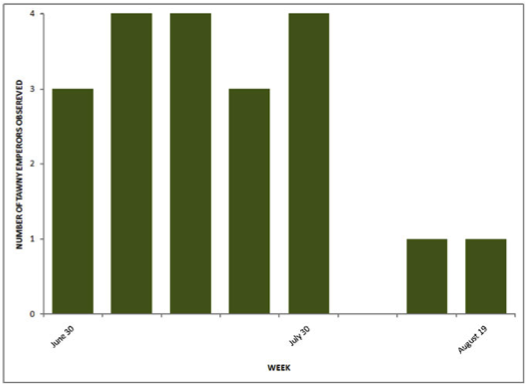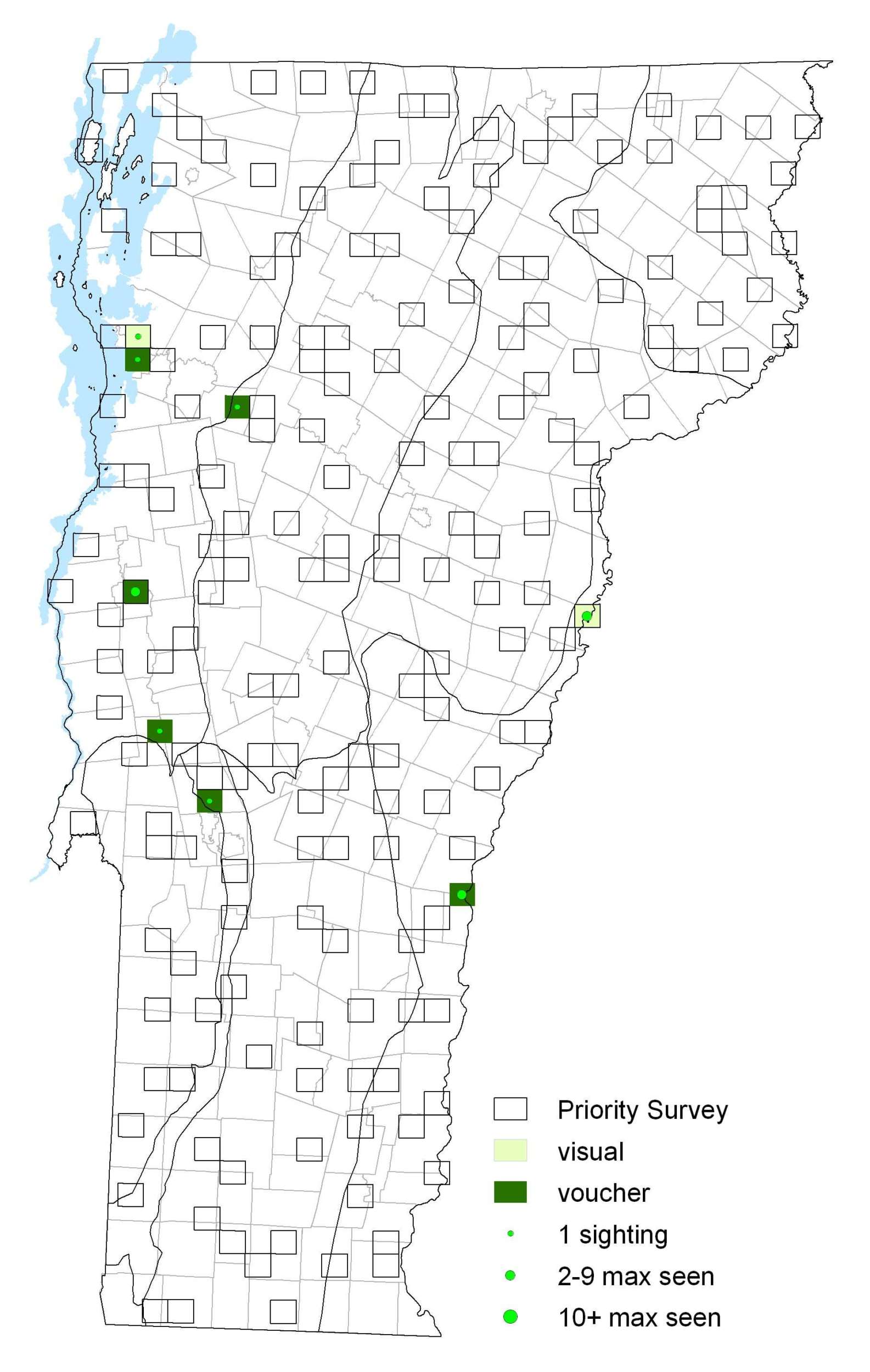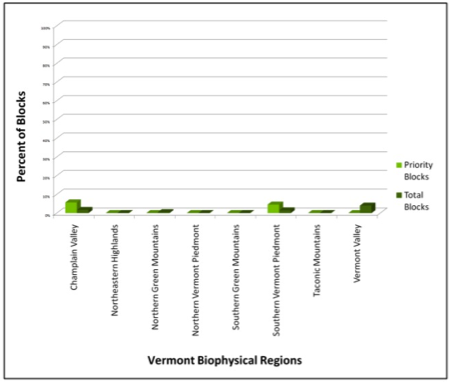|
Resident Conservation Status North American Range |
Though similar to the Hackberry Emperor physically, in range, habitat, and life history, there are two notable differences. First, it has been noted that Tawny Emperors fly earlier in the day than the Hackberry, thereby separating them temporally. Tawny larvae are gregarious and feed communally on the mature leaves of the Hackberry, whereas Hackberry larvae feed on the new leaf growth in smaller groups.
Identification
A medium sized butterfly and geographically variable. Upperside is chestnut brown; forewing with two brown bars in the cell, no white spots, and no eyespots near the outer margin. Hindwing uppersides are orange with black submarginal spots in one form, and all black in the other form.
Flight
Apparently one brood in Vermont from late June though August. Extreme dates: 30 June 2004 in Brandon (C. Darmstadt) and 19 August 2003 in Richmond (T. Fiore).
Distribution and Habitat
There are no historic records for the Tawny Emperor as it was first verified in Vermont on 20 July 2002 in Colchester (L. Berrin) during the survey. Sparsely scattered through lower Champlain Valley and Connecticut River Valley and reliant on the presence of Hackberry (Celtis occidentalis), the Tawny Emperor prefers densely wooded riparian areas in Vermont, but also reported from suburban plantings in Burlington. Adults almost never visit flowers and feed on tree sap, rotting fruit, dung and carrion. Larval host plant is the Hackberry in Vermont.







